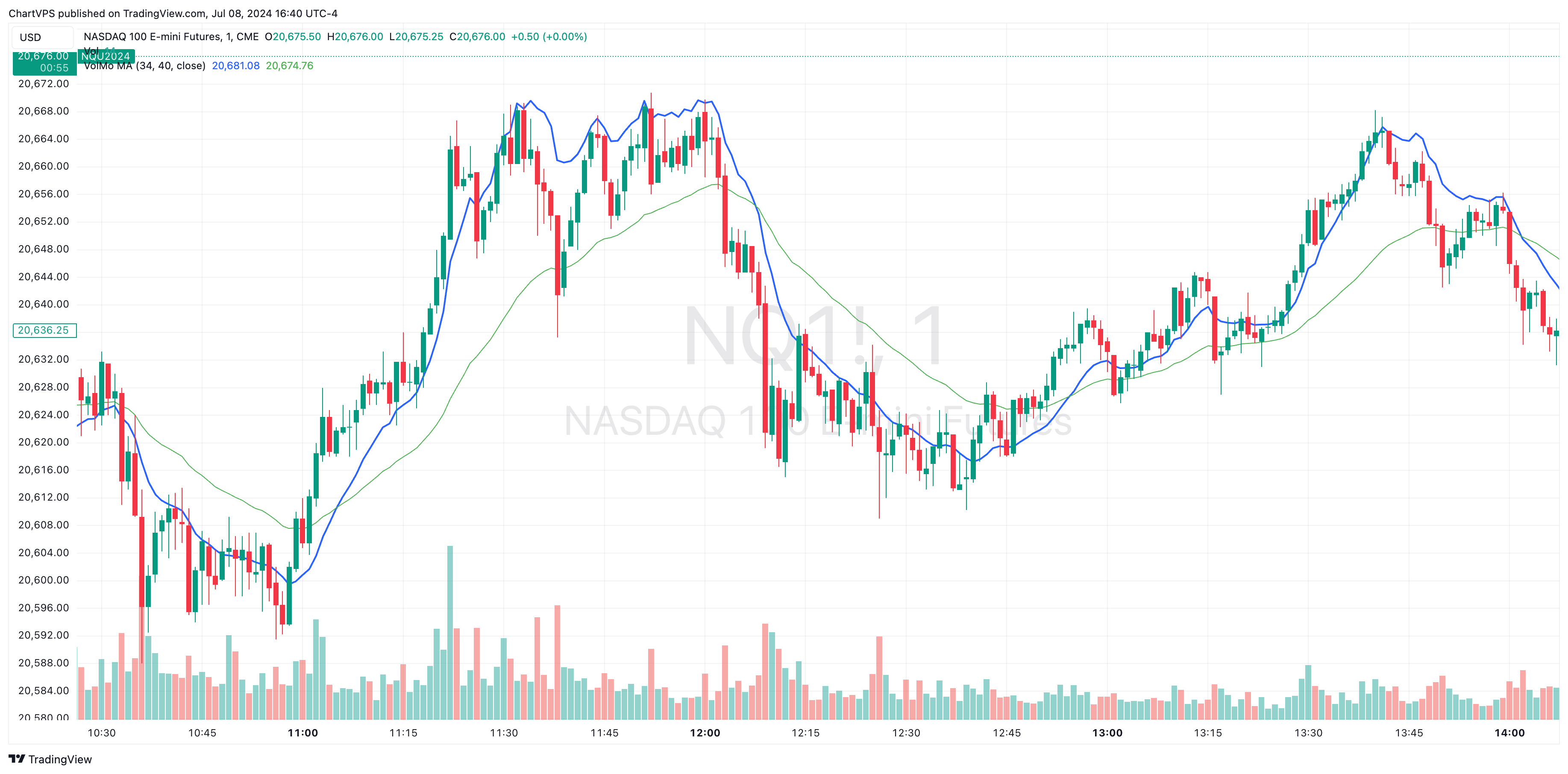Overview
Volatility-Momentum Moving Average (VolMo MA) incorporates two key market dynamics into its price averaging formula: volatility and momentum. Traditional MAs, like EMA, often lag in volatile markets or during strong price moves. By integrating volatility (price range variability) and momentum (rate of price change), we developed a more adaptive and responsive MA.
Key Concepts
- Volatility Calculation: Average True Range (ATR) used to quantify market volatility. ATR measures the average price range over a specified period.
- Momentum Calculation: Relative Strength Index (RSI) applied to assess market momentum. RSI evaluates the speed and magnitude of price movements.
- Moving Average Adjustment: Dynamically weight EMA based on volatility and momentum metrics. When volatility is high, the MA’s responsiveness increases. Similarly, strong momentum accelerates the MA adjustment.
Input Parameters:
- Length: Length of Volatility-Momentum Moving Average (VolMo MA). This input also affects how far back momentum and volatility are considered. Experimentation is highly encouraged.
- Sensitivity: Controls the Volatility-Momentum adjustment rate applied to the MA. Default is 50, but experimentation is highly encouraged.
- Source: Data used for calculating the MA, typically Close, but can be used with other price formats and data sources as well. A lot of potential here.
Note: The VolMo MA Indicator plots, both, the Volatility-Momentum Moving Average and EMA for base comparison. You can disable EMA by unticking it under Style tab.
NASDAQ 100 Futures (CME: NQ) 1-minute Chart
The following example compares VolMo MA (blue) to EMA (green). Length set to 34, Sensitivity to 40. Notice the difference in responsiveness as price action consolidates and breaks out. The VolMo MA can be used for scalping at lower Length values and 40-60 Sensitivity or as a dynamic support/resistance line at higher Length values.

Alerts
Here is how to set price crossing VolMo MA alerts: open a TradingView chart, attach NEXT NEXT Volatility-Momentum Moving Average (VolMo MA), right-click on chart -> Add Alert. Condition: Symbol (e.g. NQ) >> Crossing >> NEXT Volatility-Momentum Moving Average (VolMo MA) >> VolMo MA >> Once Per Bar Close.
Development Roadmap
- Visual signal generation: Interaction with EMA, price action, and other MAs and indicators – you can already do alerts with TradingView’s built-in Alert functionality
- Double VolMo MA: Addition of a second, fully configurable VolMo MA for a Double VolMo MA cross strategy
- VolMo MA MACD: Development of a MACD indicator based on VolMo MA
- Automation and Backtesting: Implementation via Strategy
Download
TradingView is our platform of choice for publication of the NEXT framework (indicators, strategies, etc.). The platform is free to use (Basic plan) with optional paid features, if you need them. You don’t for NEXT when using a single chart. Their fair approach to empowering retail traders aligns with ours. Trading should not be exclusive to hedge fund managers and professional traders. You can find all of our algo-driven software on the ChartVPS TradingView Scripts page. If you do decide to go with a paid version of TradingView (not required for ChartVPS NEXT), you can use this link to get up to $30 off.
